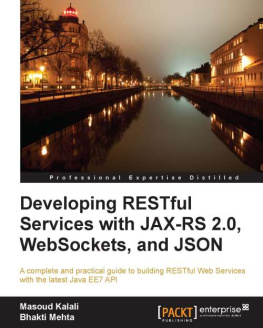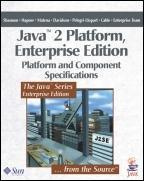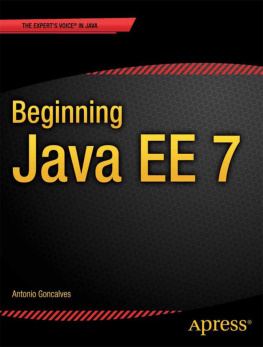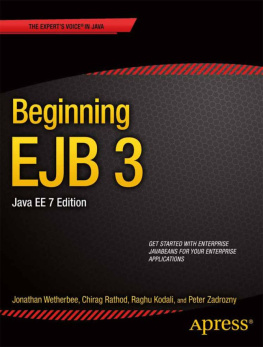If you purchased this ebook directly from oreilly.com, you have the following benefits:
If you purchased this ebook from another retailer, you can upgrade your ebook to take advantage of all these benefits for just $4.99. to access your ebook upgrade.
As Java EE platform specification lead, Ive been guiding the path of Java EE since its introduction in 1999. Arun has been a key member of the Java EE team from the beginning. The Java EE platform has evolved significantly over the last 13 years. The release of Java EE 5 in 2006 was just the beginning of a theme that continues today: making it easier to develop Java EE applications. Java EE 6 in 2009 contributed significantly to this theme with the inclusion of CDI. Java EE 7 is the latest release continuing this theme of focusing on developer productivity. Arun has been involved in several different areas of Java EE, but the common thread of his involvement has been understanding real developers and real applications. His background with Java EE, and his current role as technology evangelist for Java EE, make him uniquely qualified to introduce developers to the latest Java EE technology.
In this book, Arun surveys all the key technologies of the latest version of Java EE, giving developers a taste for these many new capabilities, and showing just how easy it is to write Java EE applications. Arun expands on his popular Java EE 6 Pocket Guide to cover more technologies in more depth. Particular attention is paid to technologies new to Java EE 7, and to new features of existing technologies. Developers with some Java EE experience, as well as developers new to Java EE, will find this a very helpful overview of Java EE 7.
Each chapter covers a Java EE technology in just enough depth to help you understand what the technology does, what its best used for, and how to get started using it. While its not a complete tutorial, an experienced developer will find that it provides just the right level of detail to understand the technology. The chapters are full of short code fragments that developers will appreciate.
After describing the key technologies of Java EE, in the last chapter of the book, Arun pulls it all together with a hands-on lab that walks you through the process of developing a real application that uses most of these technologies. This is where Aruns experience really shines. Theres nothing like seeing the code for a running application to show you how these technologies actually work in practice.
Java EE is a rich platform that weve been developing over many years. It can be daunting to sort through all the old and new versions of technologies to find the best way to write Java EE applications. Weve made it much easier to write Java EE applications in recent years, but sometimes that message doesnt come through when reading our many Java EE specifications. Aruns years of experience in working with application developers, teaching hands-on labs, and evangelizing Java EE put him in a unique position to provide all the key information at just the right depth. This book is a great way for developers to get an overview of the Java EE platform, and especially the new features in Java EE 7.
Preface
The Java EE 7 platform builds upon previous versions of the platform and focuses on higher productivity and embracing HTML5. This book is directed toward readers who want to get a quick overview of the platform and to keep coming back to review the basics.
This book provides an overview of the key specifications in the Java EE 7 platform (one specification per chapter). This book is by no means intended to be an exhaustive guide or tutorial that explains each and every concept of different specifications. However, the main concepts from the different specifications are explained using simple code samples. No prior knowledge of earlier versions of the platform is required, but youll need some basic understanding of Java to understand the code.
A significant part of this book is derived from Java EE 6 Pocket Guide (OReilly). New chapters have been added to cover the new technologies in the platform. New sections have been added or existing sections updated to reflect the changes in the platform. If you have read the Java EE 6 Pocket Guide , then you can read this book at a much faster pace; otherwise, you can read this book from beginning to end. Alternatively, you can read specific chapters based upon your interest.
I also provide self-paced instructions on how to build an end-to-end application using most of the technologies described. This allows developers to understand the design patterns they can apply to build a real-life application using Java EE 7.
I hope you will enjoy the book!
Conventions Used in This Book
The following typographical conventions are used in this book:
ItalicIndicates new terms, URLs, email addresses, filenames, and file extensions.
Constant widthUsed for program listings, as well as within paragraphs to refer to program elements such as variable or function names, databases, data types, environment variables, statements, and keywords.
Constant width italicShows text that should be replaced with user-supplied values or by values determined by context.
Using Code Examples
Supplemental material (code examples, exercises, etc.) is available for download at http://oreil.ly/javaee7-files.
This book is here to help you get your job done. In general, if this book includes code examples, you may use the code in your programs and documentation. You do not need to contact us for permission unless youre reproducing a significant portion of the code. For example, writing a program that uses several chunks of code from this book does not require permission. Selling or distributing a CD-ROM of examples from OReilly books does require permission. Answering a question by citing this book and quoting example code does not require permission. Incorporating a significant amount of example code from this book into your products documentation does require permission.
We appreciate, but do not require, attribution. An attribution usually includes the title, author, publisher, and ISBN. For example: Java EE 7 Essentials by Arun Gupta (OReilly). Copyright 2013 Arun Gupta, 978-1-449-37017-6.
If you feel your use of code examples falls outside fair use or the permission given above, feel free to contact us at .
Safari Books Online
Note
Safari Books Online (www.safaribooksonline.com) is an on-demand digital library that delivers expert content in both book and video form from the worlds leading authors in technology and business.
Technology professionals, software developers, web designers, and business and creative professionals use Safari Books Online as their primary resource for research, problem solving, learning, and certification training.

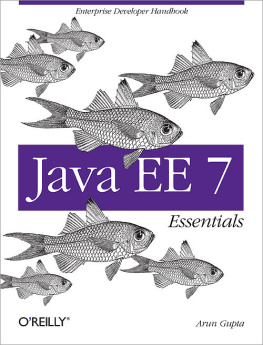
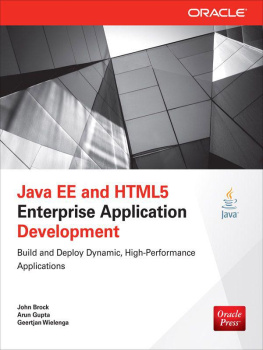
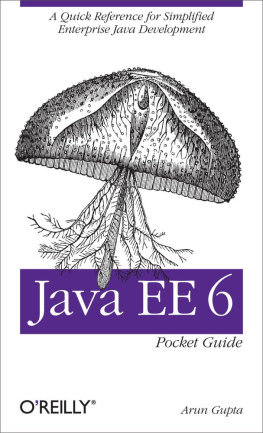
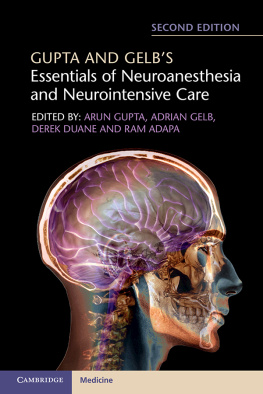
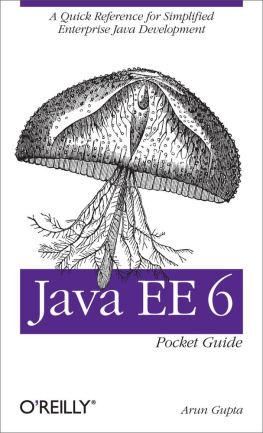
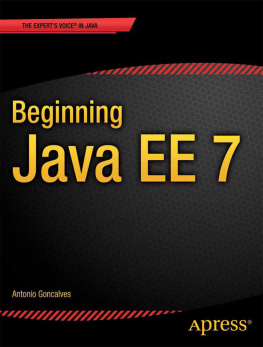

![Mario-Leander Reimer [Mario-Leander Reimer] - Building RESTful Web Services with Java EE 8](/uploads/posts/book/119360/thumbs/mario-leander-reimer-mario-leander-reimer.jpg)
